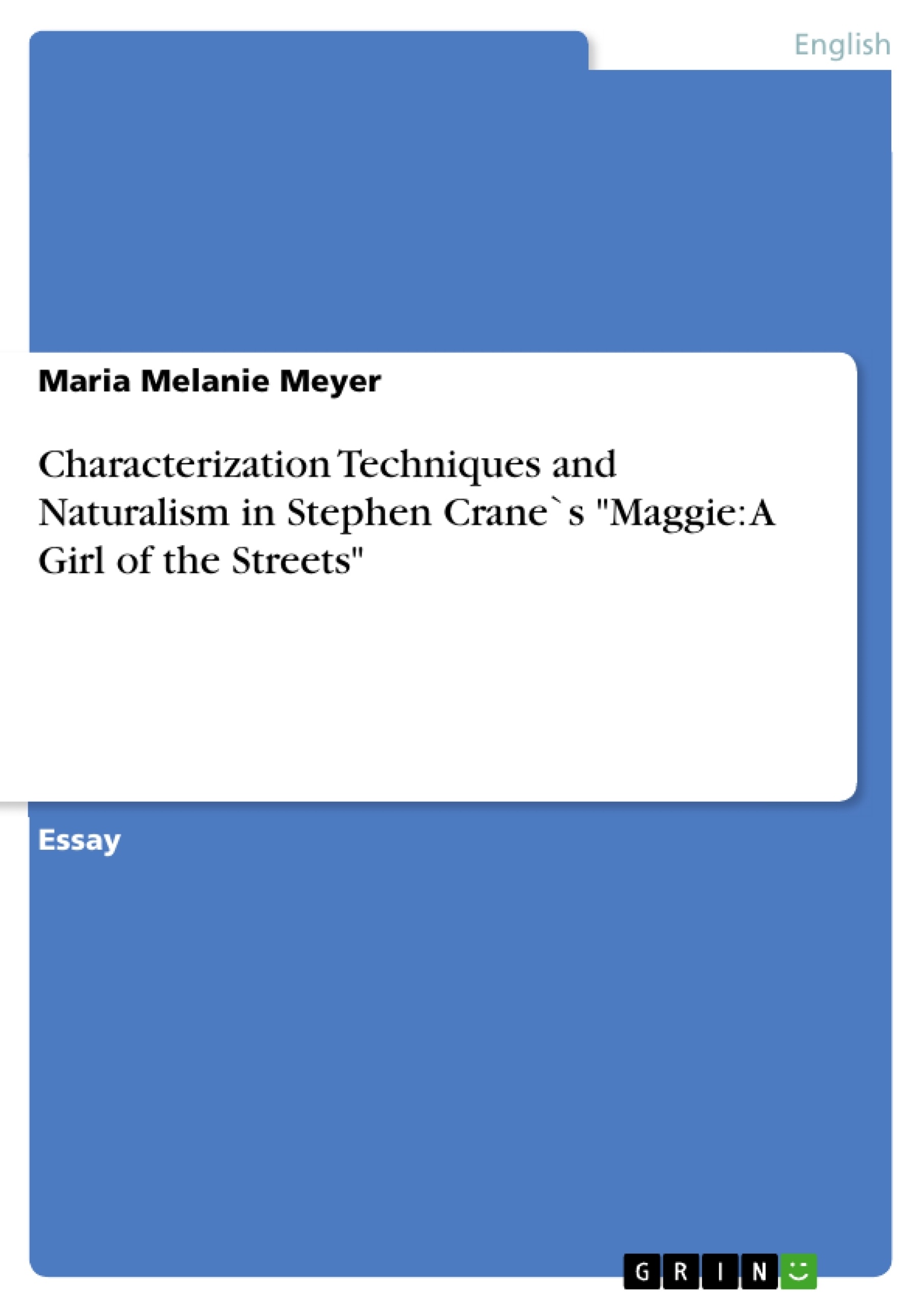Scholars classify Stephen Crane’s novel Maggie: A Girl of the Streets as a “blend of realism and naturalism” (Keenan 937). Set in the Bowery district of 19th century Manhattan, it vividly conveys the poor living conditions of the lower classes. Due to rising immigration rates and urbanization during the so-called ‘Gilded Age’, the social character of New York had undergone dramatic transformations. Thus, the realistic description of the heroine’s poor living conditions in Crane’s Maggie serves as a vivid illustration of the urban 19th century “residential segregation according to [. . .] social class” (Shi and Tindall 780). Despite its evident realistic elements, Crane’s novel cannot merely be categorized as a work of realism. In fact, the dominant techniques of characterization militate in favour of its categorization as a naturalistic novel rather than a realistic one.
Inhaltsverzeichnis (Table of Contents)
- Introduction
- Naturalism in Maggie
- The Importance of Implicit Characterization
- The Issue of Morality
- Conclusion
Zielsetzung und Themenschwerpunkte (Objectives and Key Themes)
This academic essay analyzes Stephen Crane's Maggie: A Girl of the Streets, exploring the interplay of naturalism and characterization techniques in depicting the protagonist's tragic fate. The essay argues that the novel transcends realism, focusing on the deterministic forces of environment and heredity, emphasizing the impact of social circumstances on the individual's life.
- Naturalistic representation of social determinism
- The role of implicit characterization in conveying the protagonists' personalities
- Analysis of the Bowery dialect and its implications for character portrayal
- Exploration of the influence of heredity on the protagonists' traits
- Examination of the absence of individual agency in the face of social and biological forces
Zusammenfassung der Kapitel (Chapter Summaries)
- Introduction: This section classifies Maggie: A Girl of the Streets as a blend of realism and naturalism, highlighting the novel's depiction of poverty and social conditions in 19th-century New York. The introduction argues that the novel's emphasis on characterization techniques points to a naturalistic interpretation rather than purely realistic one.
- Naturalism in Maggie: This chapter explores the novel's central theme of social determinism, arguing that Maggie's tragic life is shaped by her environment and family dynamics. It analyzes the characters' lack of individual agency, demonstrating how they are trapped by underlying forces beyond their control.
- The Importance of Implicit Characterization: This section examines the novel's implicit characterization techniques, emphasizing how Crane conveys the protagonists' personalities through their actions, words, and interactions. It focuses on the use of the Bowery dialect and its significance in revealing the characters' social background and limited perspectives.
Schlüsselwörter (Keywords)
This essay explores the key concepts of naturalism, social determinism, implicit characterization, sociolect, and the Bowery dialect in relation to Stephen Crane's Maggie: A Girl of the Streets. The analysis highlights the novel's focus on the interplay of environment, heredity, and individual agency in shaping the characters' destinies.
- Quote paper
- Maria Melanie Meyer (Author), 2009, Characterization Techniques and Naturalism in Stephen Crane`s "Maggie: A Girl of the Streets", Munich, GRIN Verlag, https://www.grin.com/document/163832



